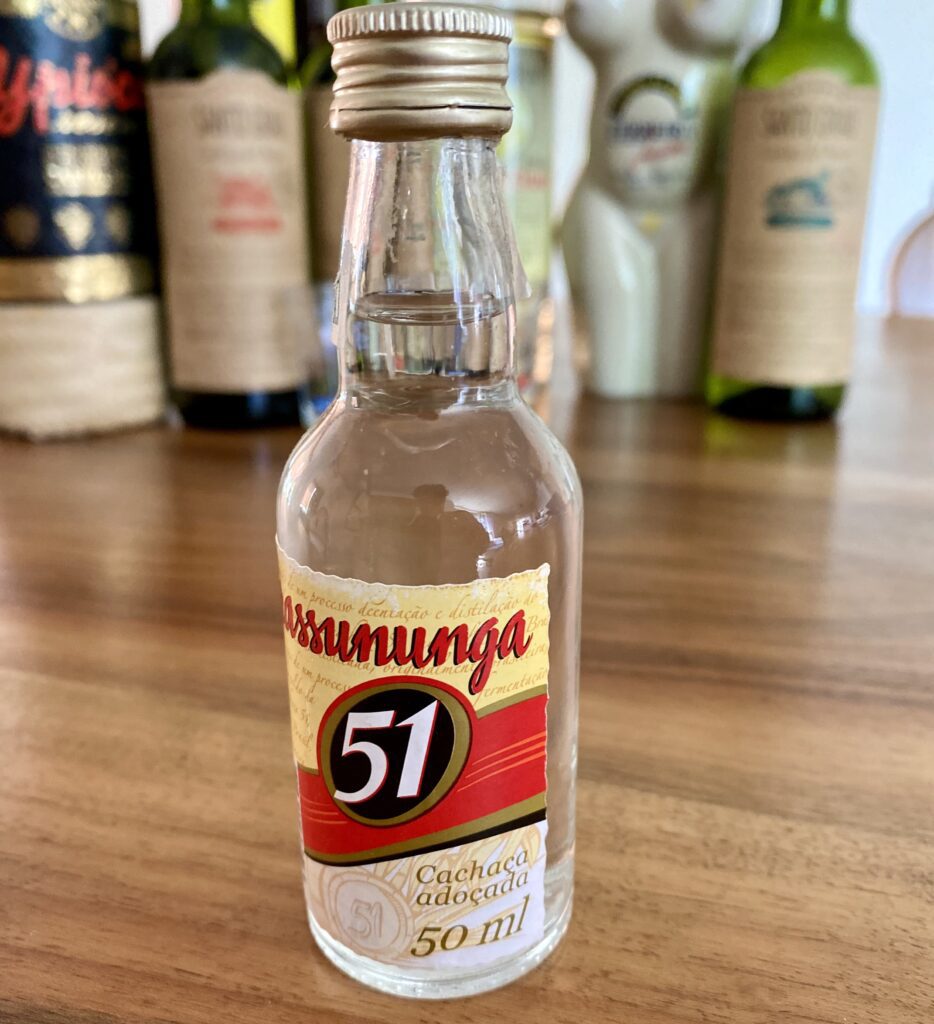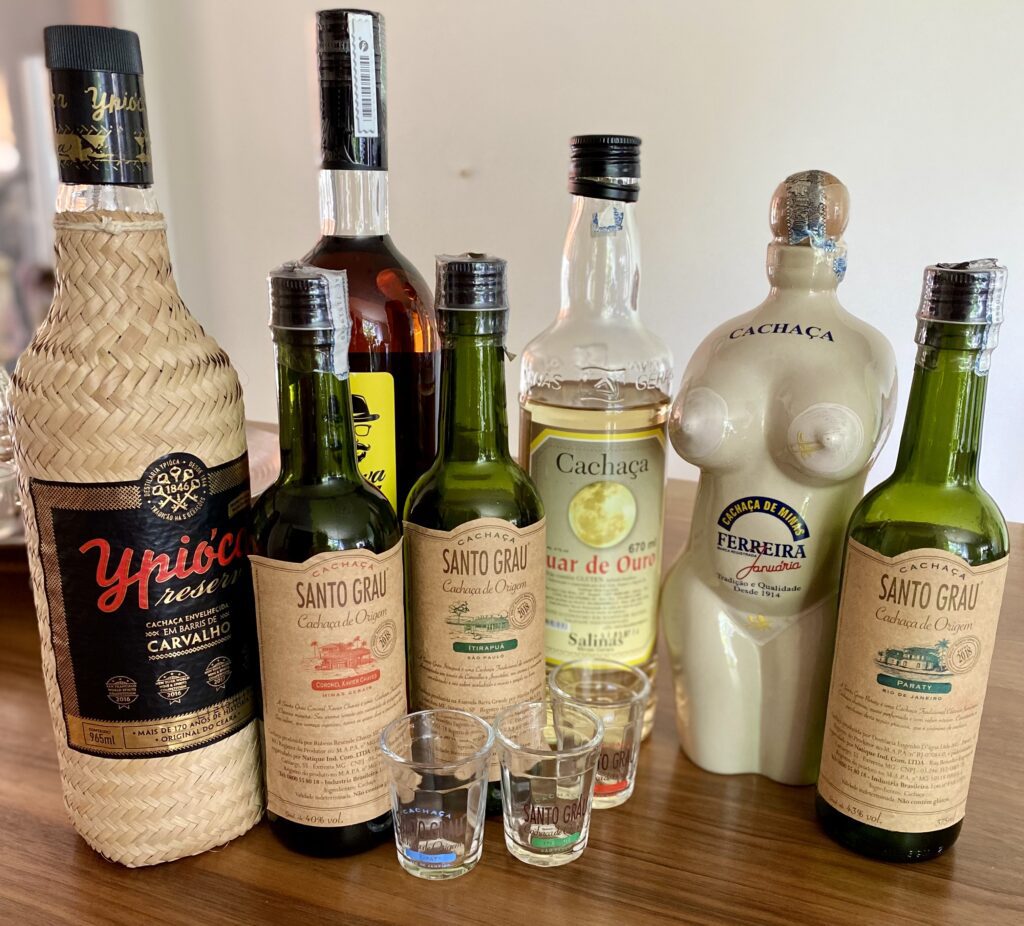Anyone who has been to Brazil and has taken a bit of a serious look at the national spirit, cachaça, knows there’s a lot more to it than what most people know about cachaça in Europe, America, or anywhere else. If I were to claim that a good cachaça can be enjoyed like a grappa after a good meal, many would most likely react to my statement with a tilted head and an even more tilted look or smile. Don’t worry, that’s how I felt before I went to Brazil for the first time and got serious about it.
Table of Content
ToggleWhat is Cachaça at all?
Of course, you know cachaça through the worldwide famous cocktail named Caipirinha,
However, in the production of this drink, the industrially produced spirit is used which, as far as I can see, is also the main reason why cachaça has fallen into disrepute outside this small ecosystem of Caipirinha.
Again, a really good Cachaça can be enjoyed like a Grappa pure without additional around. But as mentioned in the title of this chapter, let’s just start from the beginning.
The cachaça is obtained from the distillation of sugar cane, so far I tell no news. Just by the way, I would recommend everyone in Brazil to try freshly squeezed sugar cane juice which you can buy everywhere. A delicacy but respect strongly sugary which is no wonder.
The alcohol content is determined by the law and must be between 38% and 48%. Higher content requires the designation Aguardente (de Cana) and may no longer be marketed or even exported as Cachaça.
It is produced either industrially or traditionally from sugar cane must. Here, the pressed sugar cane juice is diluted with water and fermented with yeast in stainless steel containers. industrial and traditional production differ, among other things, in the fermentation time, which can be between 24 and 36 hours. The longer the mash ferments, the more aromas are released.
After fermentation follows the distillation which can be done in different ways.
After distillation, the caschaça can be either bottled or aged in barrels. A matured cachaça was stored in a wooden barrel for at least 1 year. Imagine more than 20 different types of wood can be used for storage by definition. What a treat for the palate. Envelhecida may be called the cachaça if it was stored in barrels with a maximum capacity of 700 liters.
The designation of origin Cachaça is protected in Brazil, this means that Cachaça sold there must also be produced in Brazil.
With 600 different types of sugar cane, countless distillation options, and 22 different types of wood for the storage of cachaça, one is limited to the cheap sugar cane liquor which is used in Europe for the production of caipirinha and is simply not enjoyable pure? No, ladies and gentlemen, Cachaça has reached the cult-like it is with whisky, grappa, beer, or wine long ago and needs a substantial correction of its reputation in the world of spirits.
Traditional vs industrial Production
Before you get carried away with statements, you should note here that handmade does not automatically mean better quality. Conversely, it does not mean that industrial production can cover the nuances that are created by traditional craftsmanship. It is important to mention that both types can produce good and bad cachaças.
The advantages of industrially produced cachaça lie in compliance with legally defined standards and processes, production in large quantities, low costs, and low prices. Most of the time, however, this is at the expense of taste. It does not mean that the industrially produced cachaças are bad and only serve as the basis of a caipirinha, but I can only say from my private opinion that I prefer the most traditional because of the taste of the industrially produced.
By using the copper still, which is used in traditional distillation, a finer drink is produced, with more flavor, aromas, and colors. Copper is an excellent conductor of heat, gives flavor to the distillate, and eliminates unpleasant odors. As you can see here, copper is an essential part of traditional production which is responsible for the quality of the distillate. The industry has also recognized this and has therefore installed copper plates in the steel columns.
However, copper bubbles also have a disadvantage. They can form compounds that are hazardous to health. Therefore, traditional artisanal production requires a lot of knowledge and correct handling so that these substances do not flow into the final product. However, proper handling will achieve a significant quality improvement. The copper makes such a big difference that even the best whiskies are made in copper stills.
Different types of distillation
Equipment
Different still materials also have different effects to follow as already described above and are preferred depending on the traditionally artisanal or industrially produced Cachaça.
- Copper boilers; used a lot for artisanally produced cachaça
- Vacuum distillers; allow distillation at lower temperatures. This favors the emergence of the primary and secondary aromas of cachaça.
- Stainless steel column; Allows a high yield and a cachaça with high alcohol content. Used mainly in industrial production that wants to maximize yield and quantity. It is also called continuous distillation
- A hybrid between copper fuel boiler and stainless steel column; Here, the advantages of the copper still and the stainless steel column are combined and their problems are solved. In this process, copper plates installed in the column of the distillation unit reduce the loss of ethanol, facilitate the cleaning of the unit and prevent the contamination of the distillate.
Heating of the copper pot
- Direct fire;
- Indirect fire; same principle as direct fire but without having direct contact with the copper still
- Boiler heating; Heating the boiler with steam through a spiral at the bottom of the copper pan. The kettle helps regulate the temperature and flow and gives the master distiller the ability to regulate the intensity of the heating of the sugar cane wine.
- Bain-Marie; In the water bath, the alembic is heated by heat exchange with a hot water boiler directly under the copper boiler.
Geometrie of the Still
- Onion; the most traditional format for cachaça distillery. It is a cylindrical column geometry
- Conical distillation column. ; Usually used for Whisky Destillation which ist ein ganz anderes Getränk als Cachaça.
- Spherical; usually used for Cognac, some cachaça producers use stills with similar geometry,
- Alegria anvil; Old 3-piece still,
- Chapéu de Padre or Tromba de Elefante; common in the north of Minas Gerais in small distilleries, many of which are still informal. It is an old and low-yielding device, usually heated by direct fire. The water cools in direct contact with the Capelo (a part of the device shaped like a priest’s hat, hence the popular name) and condenses the distillation vapors.
About the history of cachaça
There are many stories about its origin, but it is clear that sugar cane and the necessary distillation techniques were brought to Brazil by the Portuguese around the year 1500. After that, sugar cane cultivation and trade took their course. The first sugar mill was built in the trading post of Itamaracá in the state of Pernambuco
It is believed that the very first cachaça was distilled between 1516 and 1532, but the place is not certain. The following places could be possible
Pernambuco: Itamaracá, Igarassu, Santa Cruz
Bahia: Porto Seguro
São Paulo: Near Santos on the coast
Although its origin and date cannot be clearly verified, it is clear that cachaça was the first distillate in America to be produced in large quantities and had a not insignificant economic importance.
The distillate also had a stronger and sadder significance, as it was used in the 16th and 17th centuries to exchange for slaves on the African coast, in addition to brandy and rum. Money was scarce at the time and the need for slaves was great. During the sea voyages, the alcohol content of the spirits was preserved and they did not spoil. You have to imagine that a journey from Brazil to Africa by sailing ship took several months.
In addition, the growing number of slaves needed for the sugar cane plantations can be used to illustrate the extent of this. At the end of the 16th century, around 10 to 15 thousand slaves were brought annually from Guinea, Congo and Angola to Brazil for sugar cane cultivation. Imagine that. This means 150,000 slaves in 10 years.

Other characteristics to consider
Cachaça Adoçada
In many industrially produced cachaças, additional sugar or sweeteners are added. By law, cachaça containing more than 6 g/l and up to 30 g/l of sugar must be labeled as cachaça adoçada and may not be called cachaça only.
Unfortunately, there are many industrially produced distillates under the addition of sugar, which exceeds the legally prescribed amount. And this to make it more pleasant in taste.
The traditionally produced is usually without sugar and is more aromatic.
From my point of view, the many sugars rather destroy the taste, but here everyone must make his own picture.
Color
Cachaça that has not been aged in wood is colorless, while those that have been aged in wood present a diversity of colors. The main colors are defined as dark amber, amber, caramel, golden, straw, and pale yellow.
Other color nuances, intermediate to these proposals, can also be observed.
Conclusion
Although cachaça certainly enjoys a certain degree of fame worldwide as the basis for the even more famous caipirinha, it ekes out a completely unjust shadowy existence. We in Europe go to a bar and are not even encouraged to drink a good cachaça, as it is only very likely to be available in a few places in this country. Consequently, a huge potential exists here and was not even close to being exploited.
It looks different on the other side, in America, namely Latin America. In Brazil, the art of cachaça distillation is a universally recognized and highly valued discipline that is second to none. In my opinion, it can easily be classified in the league of whisky, cognac, and brandy distillation disciplines. Simply an art, a tradition, and a pleasure.
Last but not least, I wanted to list a few brands and searched the rankings. But even here there are different evaluation bodies, associations, and opinions. There are simply too many good cachaças already in Brazil that make a ranking from my side not possible.
Nevertheless, I would like to conclude by mentioning a few brands that I have already tasted or have already read a lot of good about them. It is important to know that many of these brands each with different qualities and price range naturally advertise their products. The list should not be exhaustive.
- Ypioca: Ouro, Prata,…
- Weber Haus
- Santo Grau
- Princessa Isabel
- Cachaça Salinas
- Vale Verde
- …












